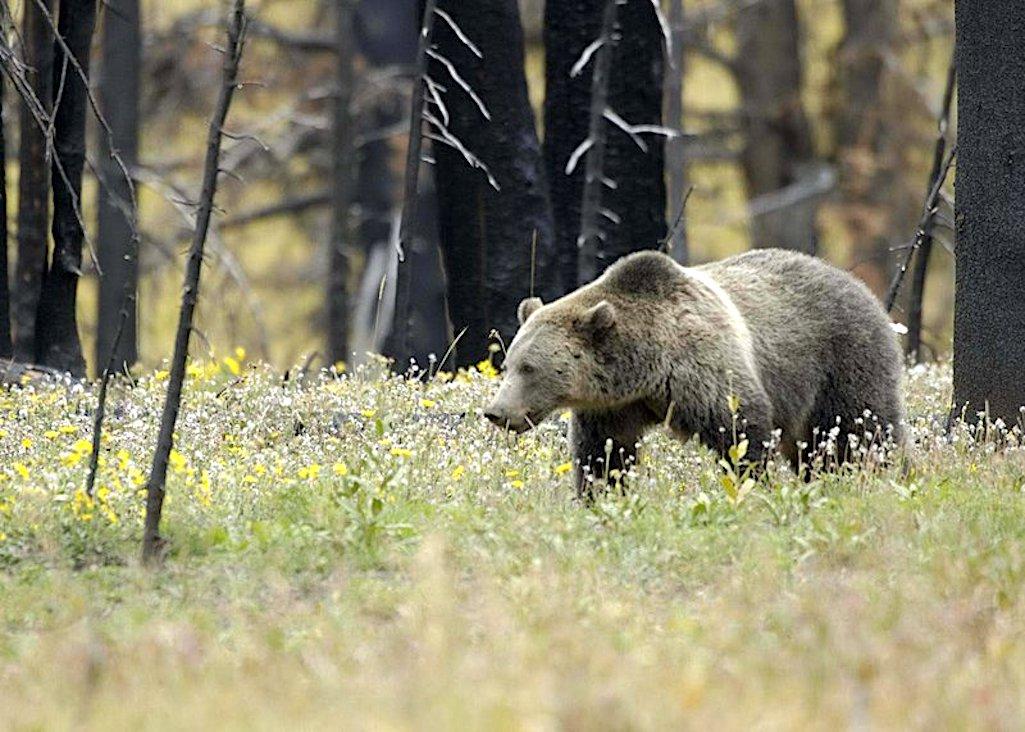As the country gets more crowded, and wildlife more squeezed, how much would you pay to help conserve species? It's a question gaining more attention for areas of valuable wildlife habitat and where there's a mix of federal and state lands that wildlife occupy.

Would you pay an extra park fee to help conserve wildlife?/USFWS file
More than six years ago a survey of Yellowstone National Park visitors found that 95 percent would pay an extra $1-$15 in entrance fees if it meant they'd be able to see grizzly bears in the park, and some would hand over $50 to help ensure they'd see bears.
How valuable is it for visitors to see a bear? According to that 2014 study, which was conducted by park staff, if bears became more difficult to spot, the region would take an economic hit.
Results from our visitor survey indicate that if bears were no longer allowed to stay along roadside habitats, spending in the local economy by Park visitors could decrease by about $10.1 million, resulting in a loss of 155 jobs. Results from a nonmarket valuation survey question indicate that, on average, visitors to Yellowstone National Park are willing to pay around $41 more in Park entrance fees to ensure that bears are allowed to remain along roads within the Park.
Would Yellowstone visitors be willing today to pay an extra fee to help "wildlife conservation efforts beyond park boundaries"? A research paper last month took a dive into that question, and while the authors didn't survey the general public, they estimated how much money could be generated for wildlife conservation through an additional fee.
At Yellowstone, adding $1-$10 per vehicle onto the existing entrance fee could raise $1 million-$13 million a year, the authors calculated. Another approach, adding a small fee to lodging rates, could generate as much as $22 million annually, they noted.
"These amounts would grow larger if multiple approaches were combined and the funds were used to leverage additional public and private resources," they wrote. "For purposes of illustration, based on costs of common conservation activities in the (Greater Yellowstone Ecosystem), new annual revenue on the order of $10–20 million could provide matching funds for several conservation easements or highway crossings; several projects to mitigate human-wildlife conflicts on private lands; and the entire annual cost of state compensation for livestock depredations around the GYE."
Of course, wrote the authors, envisioning such a financing system and implementing one are two different, and possibly complicated, things, particularly if the revenues were collected in a national park and were to be spent outside the park.
"Clearly, the collection of a conservation fee at park entrances would face a number of legal, ethical, and political challenges," they wrote. "The most obvious legal challenge is that current federal law may not permit the use of entrance-fee revenue beyond park boundaries, or for all wildlife conservation purposes—leading to a political challenge in the need to pass new legislation. A conservation fee may also face serious ethical and political challenges if it increases barriers—real or perceived—to park visitation."
Still, "the concept of using park visitation to fund large-landscape conservation and empower its proponents appears promising for systems with significant cross-boundary conservation needs and high visitation rates. This concept also appears consistent with the recent assessment that 'the American people – including but not limited to visitors and residents of communities near parks – must be recruited as ‘co-stewards’ of the national parks.'”
Both papers are attached below.



Add comment